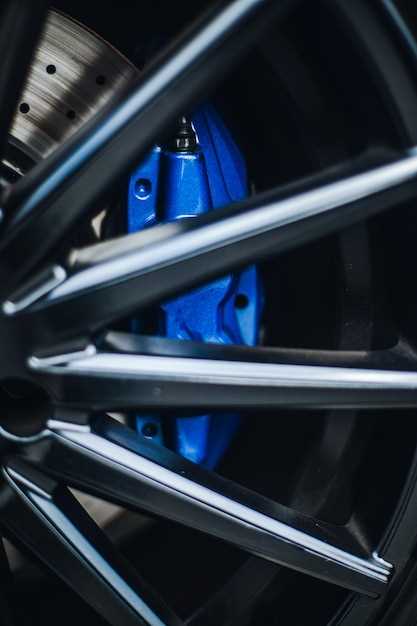
Employing cutting-edge composites and alloys is key to enhancing performance metrics in automotive engineering. The integration of these advanced solutions significantly reduces mass, which translates into improved acceleration, braking, and fuel efficiency.
Using non-ferrous materials such as aluminum and magnesium can provide substantial weight savings without compromising structural integrity. Carbon-fiber reinforced plastics also play a pivotal role, offering high stiffness-to-weight ratios while facilitating intricate shapes that enhance aerodynamics.
Manufacturers should also explore additive manufacturing, enabling the creation of complex components with minimal waste. This approach not only lightens the overall build but accelerates prototyping and production timelines, allowing for rapid innovation cycles.
The implementation of these innovative substances allows for more agile tuning of suspension systems and powertrains, ensuring optimized handling and responsiveness. As a result, the driving experience becomes more exhilarating, marrying aesthetics and functionality seamlessly.
Impact of Carbon Fiber in Sports Car Performance

Carbon fiber significantly enhances the dynamics of vehicles by providing unparalleled rigidity while minimizing weight. This composite decreases overall mass, allowing for quicker acceleration and improved handling. Cars utilizing carbon fiber can achieve higher speeds due to lower inertia and improved aerodynamic properties.
The increased stiffness from carbon fiber structures contributes to better responsiveness during cornering, enhancing stability and control. This material absorbs vibrations effectively, resulting in improved ride quality without compromising performance. The notable reduction in weight also impacts fuel efficiency, allowing drivers to travel longer distances on less fuel.
With carbon fiber, there’s a noticeable reduction in braking distances attributable to the lower weight and increased structural integrity. This advancement translates into enhanced safety, as braking systems operate more effectively, providing drivers with greater confidence. Furthermore, integrating this composite into chassis and body panels permits innovative shapes that optimize aerodynamic performance.
Manufacturers adopting carbon fiber practices often see a competitive edge, as these enhancements lead to superior driving experiences. This technology not only elevates performance metrics but also allows for a level of customization and creativity in shaping vehicle aesthetics. The future of performance vehicles will likely continue to leverage the advantages offered by this remarkable composite, setting new benchmarks in speed and efficiency.
Aluminum Alloys: Balancing Weight and Strength in Design
Utilizing aluminum alloys is a strategic choice for achieving an optimal combination of mass reduction and structural integrity. Selecting specific alloy grades, such as 6061 and 7075, provides manufacturers with options that cater to different performance requirements. The former offers good weldability and corrosion resistance, while the latter excels in strength.
Incorporating these alloys into various components, such as chassis and body panels, enhances agility and responsiveness. Advanced techniques like extrusion and forging allow for precision shaping, maximizing the mechanical properties of the material. This tailored approach helps engineers meet specific performance targets without compromising on durability.
Implementing aluminum alloys facilitates a lower center of gravity, improving handling dynamics. This factor considerably enhances cornering stability and driving confidence. Rigorous testing is necessary to validate the impact of these choices on overall vehicle performance.
Adopting innovative joining methods, such as MIG welding and adhesives, optimizes assembly while maintaining structural strength. Proper surface treatment techniques, including anodization, contribute to longevity by increasing resistance to wear and corrosion.
In conclusion, strategically employing aluminum alloys not only lightens the overall profile but also fortifies critical elements of vehicle architecture. This allows manufacturers to push boundaries in pursuit of higher performance standards. Careful selection and engineering of these alloys remain key for achieving the desired balance in every aspect of production.
Future Trends: Innovations in Lightweight Materials for High-Performance Vehicles

Future advancements in composites, such as carbon fiber reinforced polymers (CFRP) and advanced aluminum alloys, will significantly reduce weight without compromising strength. These composites are being engineered to enhance aerodynamic capabilities and overall performance in high-speed conditions.
Nanomaterials, including graphene and carbon nanotubes, are set to enhance structural integrity while keeping mass low. Their incorporation often leads to better fuel efficiency and agility, responding to the demands of enthusiasts seeking improved handling.
3D printing technology is becoming prevalent in fabricating components tailored for high-performance vehicles. This approach allows for intricate designs that optimize weight distribution, further enhancing speed and maneuverability.
The integration of bio-based materials is on the rise. Natural fibers, like hemp and flax, offer weight advantages and lower environmental impact. Their use aligns with a growing trend towards sustainability in performance engineering.
Smart materials that adapt to environmental conditions are also gaining traction. These innovations will enable vehicles to respond dynamically to driving situations, further improving safety and performance under varying conditions.
Establishing partnerships between automotive manufacturers and material scientists will accelerate the development of innovative solutions that meet the rigorous demands of racing and everyday driving. These collaborations can lead to breakthroughs in weight-saving technologies tailored specifically for performance-focused applications.

